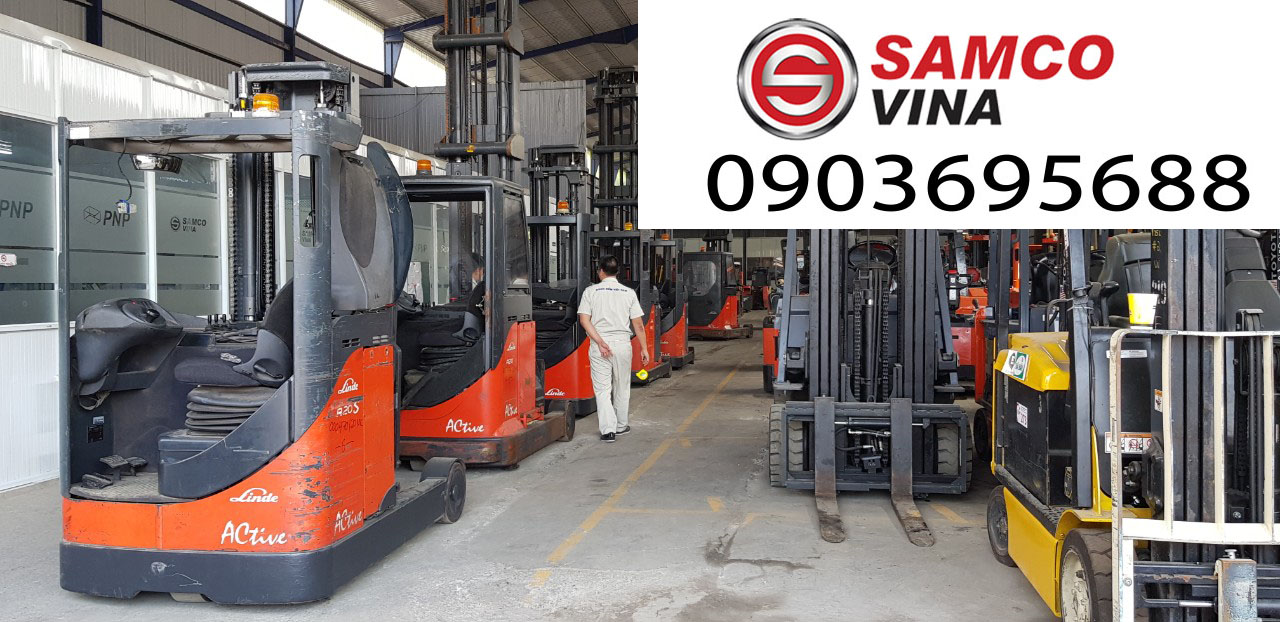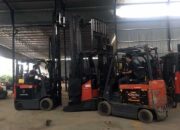Things to pay attention to when working with forklift batteries
In the previous post of samcovina.com, we have guided the design standards of a safe battery charging room/station for forklifts. Today, we suggest a few more safety tips when working with industrial batteries.

- Absolutely do not smoke, create sparks, open flames or solder near the battery chargerThis being clear, if there were any open flames or sparks near a battery charging station that would be an easy fire hazard, possibly resulting in a large explosion.
Make sure the battery cover is open while charging
Charging the battery will emit hydrogen gas during charging, opening the battery cover fully vented is necessary to disperse the gases otherwise it can compress in high concentrations and become a flammable place. Opening the battery cover will provide adequate ventilation.
Keep valve cover (vent) during filling (charging)
The valve covers all have vents that allow air to escape. If the valve cap is opened or removed, drops of acid and water will form on the top of the battery causing an electric shock, which will affect the battery’s frame. This can make it difficult to track down problems.
Always turn off the charger before disconnecting the battery
It is imperative that all chargers are turned off before you disconnect a battery as direct electricity can spark and become a source of ignition.
Never remove the battery by pulling the cord, always hold the latch and remove the charging plug.
Pulling the lead out of a battery unit will eventually damage the lead.
Always allow charging to complete one charge cycle
Disconnect a battery unit before a charge cycle is complete (full charge of one battery will continue to charge the next, to avoid overcharging). When using a standard charger – it can damage the battery performance, which in turn reduces the overall life of the Battery. It’s best to ask the seller for the correct charger that’s specific to the type of forklift you’re buying, not a universal charger for all batteries.
Make sure the battery charging head is clean and dry at all charges
It is imperative that the tip of the battery be clean and dry at all charges, if it gets wet when connecting to charge it becomes a high electric shock hazard. The battery will also self-discharge due to voltage monitoring. This may result in a non-rechargeable (unconnected) battery condition when returning to the extended shutdown phase. Having clean charging points also ensures a proper charging connection and is maintained with correct battery charges.

Never discharge a battery below 80% of its capacity/ learn more:
When a battery is discharged beyond 80% of its life (life cycle) decreases significantly, instead of a life span lasting at least 5 years (1 change only, 5 days/week operation), your battery may only last 2 years. Furthermore, discharging the battery beyond 80% also causes electrical problems with the forklift, such as overheated circuitry, blown fuses etc. In some cases, the charger won’t recognize the battery when recharging and you will have to repair the battery at a very expensive rate.
Always give the appropriate time to cool the battery
A suggested cooling should be observed as the battery charge temperature increases. It becomes a potential hazard if overheated; It also greatly reduces the life of the battery.
Inspect batteries, leads and plugs for damage, reporting any faults immediately
A thorough inspection of all charging devices should be conducted prior to each charge to ensure a safe and chargeable charging cycle is completed. Damaged charging equipment can lead to errors in the charging process.
Recharge only when the battery is fully charged
During the time the electrolyte discharge is absorbed into the plates, this effect is reversed while the battery is being charged. If the battery has been discharged at any stage other than fully charged you run the risk of the battery spilling acid on the next charge. The reason we charge batteries is to replace liquids that have evaporated during the charge cycle, not liquids that have been absorbed into the plates during discharge.







